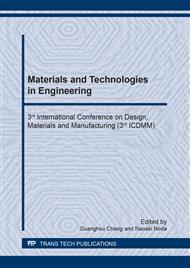p.40
p.46
p.53
p.59
p.65
p.72
p.79
p.84
p.89
Ratio of Cutting Force Components in Turning
Abstract:
Turning of cast iron and steel is monitored with the help of three-dimensional force and vibration sensors. It is shown the ratios of force components have the similar trends despite of material characteristics. Moreover, the normalized values of dynamic force components (variation of force signals) are the same in a wide variation of cutting condition. These results are discussed and confirmed by a mechanical model of work-tool interaction during the cutting process.
Info:
Periodical:
Pages:
65-71
Citation:
Online since:
December 2018
Authors:
Keywords:
Price:
Сopyright:
© 2018 Trans Tech Publications Ltd. All Rights Reserved
Share:
Citation:


